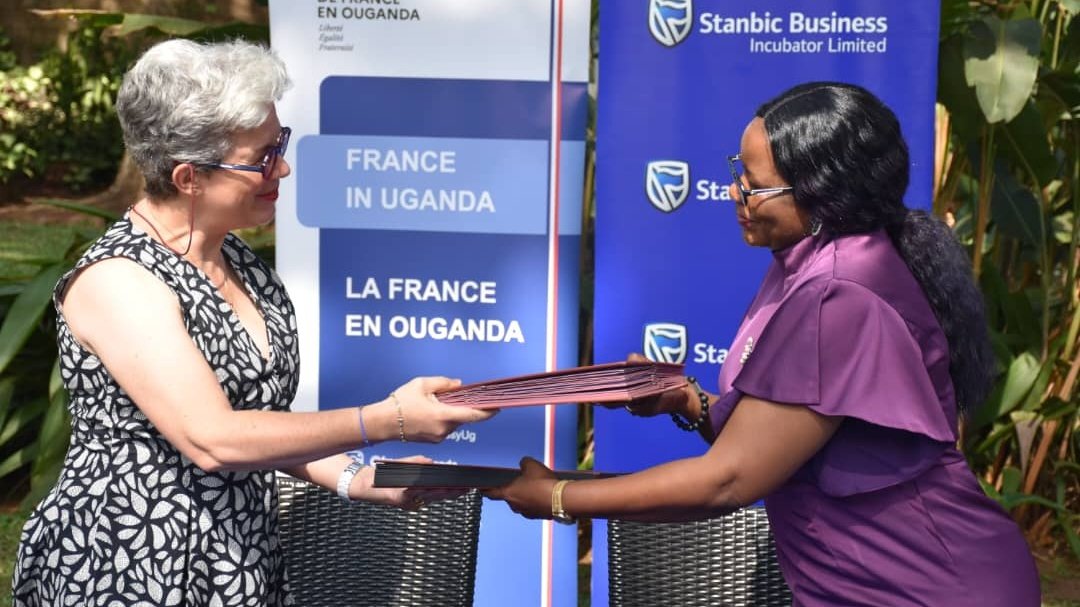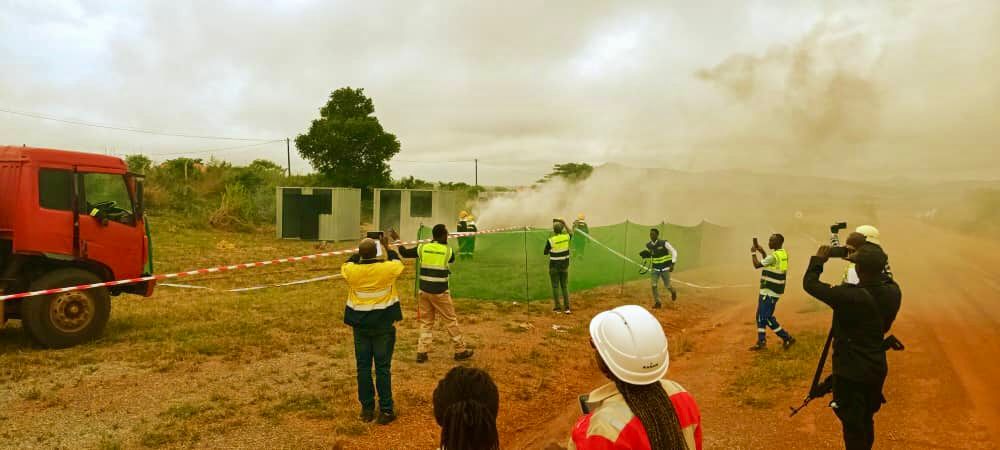How Uganda embarked on a journey to send its maiden satellite into space
The PearlAfricaSat-1 was launched into space by the National Aeronautics and Space Administration (NASA) at their base in Virginia, United States.

Uganda’s venture into space science was teed off on Monday 7th November 2022 after the country launched into space its first-ever satellite codenamed PearlAfricaSat-1.
The PearlAfricaSat-1 was launched into space by the National Aeronautics and Space Administration (NASA) at their base in Virginia, United States.
Uganda hosted a viewing event at Kololo Airstrip in Kampala where the Minister for Science, Technology and Innovation, Dr Monica Musenero, and the three Ugandans who designed the satellite Bonny Omara, Edgar Mujuni and Derick Tebusweke watched the launch via a video link.
Musenero said this was the first satellite Uganda has ever made. The satellite, the Minister said, will provide research and observation data that will provide solutions in the weather forecast, land, water bodies, mineral mapping, agriculture monitoring, disaster prevention, infrastructure planning and border security.
How it all started
According to several sources, the initiative to build Uganda’s first satellite began in October 2019 as part of a directive by President Yoweri Museveni to the Ministry of Science, Technology, and Innovation.
The President directed the ministry to put in place a National Space Agency and Institute. This gave birth to Space Technology Agency. The agency aims to advance the inclusive use of space science tools and services for socio-economic development.
Subsequently, a collaborative research agreement was signed between Uganda and the Kyushu Institute of Technology (Kyutech) of Japan to enrol and upskill three graduate engineers to design, build, test, and launch the first satellite for Uganda.
And in April 2020, Uganda began the path to launch its first satellite into space by sending three graduate students Edgar Mujuni, Derick Tebusweke and Bonny Omara to obtain training in satellite design, build, test, launch and operation, as part of a multinational programme known as the BIRDS-5 project.
A historical Pearl AfricaSat-1
One of the requirements for their training was to develop a cube satellite and the result is the Pearl AfricaSat-1. It is the latest mission from the Joint Global Multi-Nation Birds Satellite Project, a multinational programme to help countries build their first satellite.
A report from CIO Africa indicated that the BIRDS-5 project, which is being implemented in collaboration with the Kyushu Institute of Technology in Japan, has four key objectives.
This is not the first time that Uganda and Japan are collaborating on space technology.
The Mpooma satellite earth station in Mukono district was designed and built by a Japanese Nippon Electric company in 1978. Efforts to revive it have been boosted by the launch of Pearl AfricaSat-1in space.
Uganda plans to establish a space laboratory in Uganda to facilitate knowledge transfer and construction of subsequent satellites to develop the Space Technology Industrial Value Chain.
In May this year, Musenero told journalists that the successful completion of the PearAfricaSat-1 was historical since the satellite is the first satellite for Uganda.
“A group of Ugandans (with the help of the students) will be tasked to install Ground Sensor Terminals (GSTs) to facilitate communication to the satellite,” she said of the plans the government has regarding space technology development.
“In addition to the information that will be received from PearAfricaSat-1, Uganda has been given an opportunity to utilize services of other satellites operated under the BIRDS project,” she added.
Benefits of having a satellite in space
Among its uses, the Minister noted that the PearlAfricaSat-1 had been specifically designed to provide research and observation data that will provide solutions in the weather forecast, land, water bodies and mineral mapping, agriculture monitoring, disaster prevention, infrastructure planning, and border Security.
Additionally, the core missions for PearlAfricaSat-1 are a multispectral camera payload. The Multispectral Camera mission will provide about 20-metre resolution images for Uganda to facilitate water quality, soil fertility, and land use and cover analysis.
The satellite will play a vital role in the oil and gas operation by monitoring the East African Crude Oil Pipeline.
This will enable accurate weather forecasts by gathering remote sensor data for predicting landslides and drought. Once the satellite reaches orbit, a Uganda ground station will monitor its health status for a few days before it starts executing its mission.
A multi-trillion Shillings project
When asked about costs incurred in the satellite project, Dr Musenero did not give the exact amount of money spent on the project but previous reports from the government indicated that around Shs7 billion had been invested towards this innovation and development.
According to aerospace experts, the average cost of launching a satellite in space is estimated to range from $50m to $400m (about Shs190billion to Shs1.52 trillion), depending on the type of satellite one desires to launch.
According to the Africa-space Generation Advisory Council, a total of 20 satellites have been launched by African states since 2016, totalling 41 satellites on the continent, with Egypt leading the space technology with nine launched satellites.
The PearlAfricaSat-1 shall be operated from Uganda and all its data shall be analysed and utilised in Uganda using a ground station.
The crew at the station sends commands to the satellite as an uplink and receives data transmission from the satellite as a downlink.
After the success of Pearl AfricaSat-1, Uganda is expected to build a second satellite from Uganda. This, if all goes well, is expected to be launched by the end of 2024. This is expected to be done in Uganda
“As a country, the development of PearlAfricaSat-1 presents opportunities for the development of subsequent satellites locally in Uganda.
This means our engineers and scientists will be providing practical solutions to the challenges facing the Ugandan citizens as well as boosting the country’s internal capacity to develop the space science and technology industry value chain,” Musenero said.







